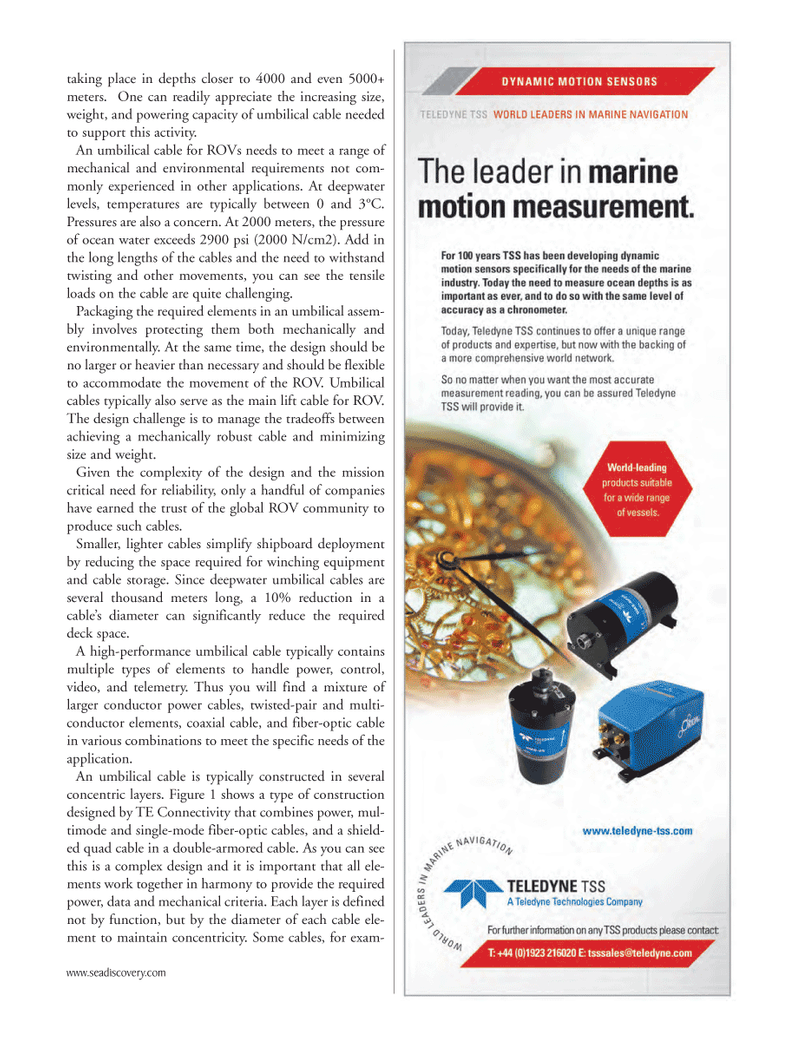
Page 31: of Marine Technology Magazine (May 2012)
Hydrographic Survey
Read this page in Pdf, Flash or Html5 edition of May 2012 Marine Technology Magazine
www.seadiscovery.com taking place in depths closer to 4000 and even 5000+ meters. One can readily appreciate the increasing size, weight, and powering capacity of umbilical cable needed to support this activity. An umbilical cable for ROVs needs to meet a range of mechanical and environmental requirements not com- monly experienced in other applications. At deepwater levels, temperatures are typically between 0 and 3°C. Pressures are also a concern. At 2000 meters, the pressure of ocean water exceeds 2900 psi (2000 N/cm2). Add in the long lengths of the cables and the need to withstandtwisting and other movements, you can see the tensile loads on the cable are quite challenging. Packaging the required elements in an umbilical assem- bly involves protecting them both mechanically and environmentally. At the same time, the design should be no larger or heavier than necessary and should be flexible to accommodate the movement of the ROV. Umbilical cables typically also serve as the main lift cable for ROV. The design challenge is to manage the tradeoffs between achieving a mechanically robust cable and minimizing size and weight. Given the complexity of the design and the mission critical need for reliability, only a handful of companies have earned the trust of the global ROV community to produce such cables. Smaller, lighter cables simplify shipboard deployment by reducing the space required for winching equipment and cable storage. Since deepwater umbilical cables are several thousand meters long, a 10% reduction in a cable?s diameter can significantly reduce the required deck space. A high-performance umbilical cable typically contains multiple types of elements to handle power, control, video, and telemetry. Thus you will find a mixture of larger conductor power cables, twisted-pair and multi- conductor elements, coaxial cable, and fiber-optic cablein various combinations to meet the specific needs of the application. An umbilical cable is typically constructed in several concentric layers. Figure 1 shows a type of construction designed by TE Connectivity that combines power, mul- timode and single-mode fiber-optic cables, and a shield-ed quad cable in a double-armored cable. As you can see this is a complex design and it is important that all ele- ments work together in harmony to provide the required power, data and mechanical criteria. Each layer is defined not by function, but by the diameter of each cable ele- ment to maintain concentricity. Some cables, for exam- MTR#4 (18-33):MTR Layouts 4/27/2012 10:10 AM Page 31

 30
30

 32
32
